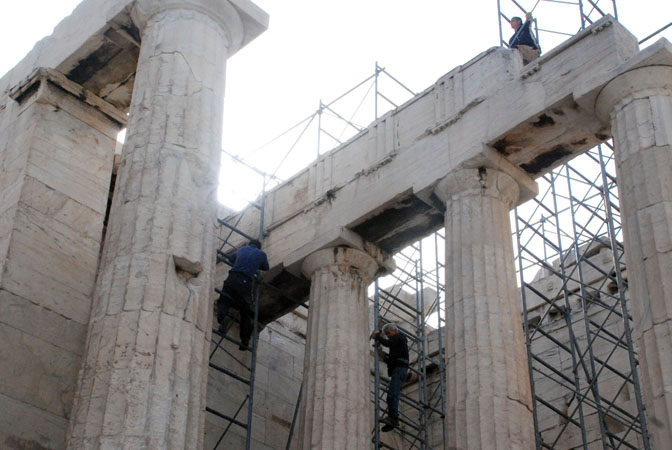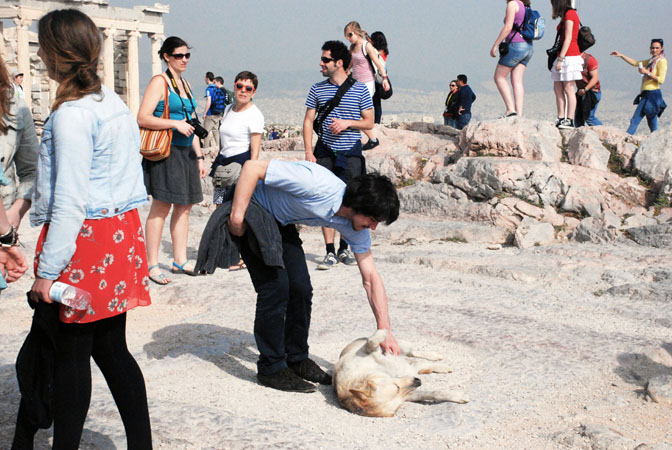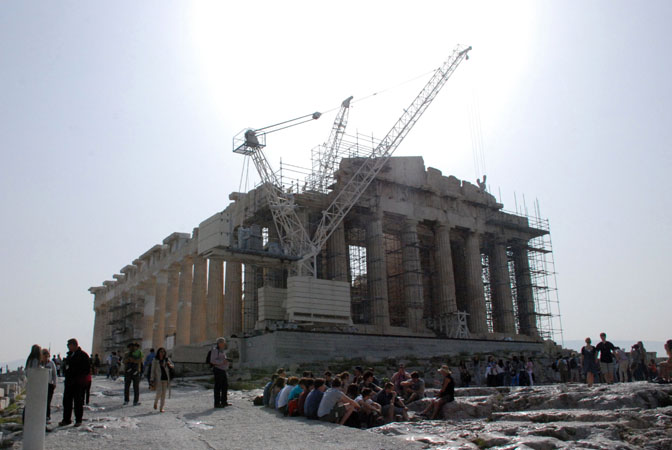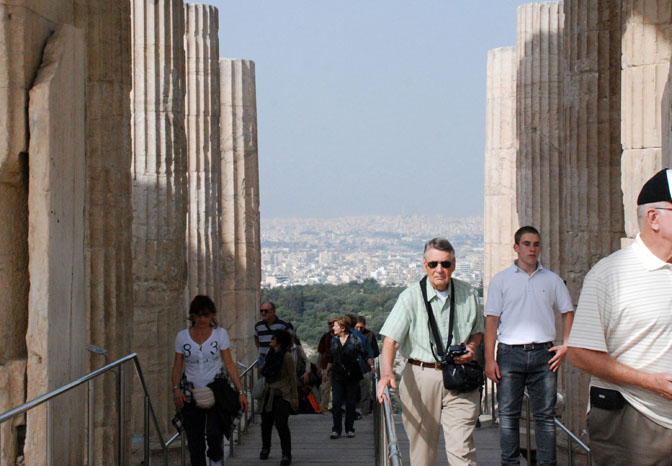The Acropolis of Athens and its monuments are universal symbols of the classical spirit and civilization, and form the greatest architectural and artistic complex bequeathed by Greek antiquity to the world. This grand composition of perfectly balanced massive structures creates a monumental landscape of unique beauty consisting of a complete series of masterpieces of the 5th century BC. The monuments of the Acropolis have exerted an exceptional influence, not only in Greco-Roman antiquity, but in contemporary times as well.
While the Acropolis was certainly an astounding sight, I was a little caught off guard by the sheer number of people trampling around the hill. Tourism accounts for about 15% of Greece’s GDP and approximately 4 million tourists visit the Parthenon every year.In addition to the bombardment of tourists, archeologists were everywhere, climbing along columns and on sides of ancient buildings. After a century of excavations on the site, the Acropolis is now a testing ground for conservation techniques aimed at safe guarding the marble sections which have been affected by heavy atmospheric pollution. You’d think I would be used tourists and scaffolding as I go to school across from DC’s National Mall, but I found the Acropolis to be on an entirely different level.





